Review Questions - Click On The Picture To Begin...

- Pipe used to make concrete bells.
- Pipe whose flanged end is of smaller diameter than its barrel.
- Concrete used to make bell pipe.
- Pipe whose flanged end is of larger diameter than its barrel.
Quote From The CDL Manual:
Bell Pipe Concrete:
Pipe whose flanged end is of larger diameter than its barrel.
- Vehicle must be equipped with center stakes or comparable devices.
- Vehicle must be divided by center stakes into sections of staggered length.
- Each tiedown must secure the highest log on each side of the center stake.
- Each tiedown must be fastened below the logs on each side of the center stake.
Quote From The CDL Manual:
Requirements for dividing vehicles over 10m (33 ft)
Vehicles over 10 m (33 ft) must be equipped with center stakes, or comparable devices, to divide it into sections of equal length.
Each tiedown must:
- Secure the highest log on each side of the center stake.
- Be fastened below these logs.
- A strip of material that may be used to unitize articles and is tensioned and clamped or crimped back upon itself. (same as "Strapping")
- A combination of securing devices which form an assembly that attaches cargo to, or restrains cargo on, a vehicle or trailer, and is attached to anchor point(s).
- A device placed on the exposed edge of an article to distribute tiedown forces over a larger area of cargo than the tiedown itself, to protect the tie-down and/or cargo from damage, and to allow the tiedown to slide freely when being tensioned.
- Material used to fill a void between articles of cargo and the structure of the vehicle that has sufficient strength to prevent movement of the articles of cargo.
Quote From The CDL Manual:
Banding:
A strip of material that may be used to unitize articles and is tensioned and clamped or crimped back upon itself. (same as "Strapping")
- The center of the highest log on each side or end must be above the top of each stake, bunk, or standard.
- Outer bottom logs must be in contact with and rest solidly against bunks, bolsters, stakes, or standards.
- Logs must be loosely packed.
- Each inside log on the side of a stack of logs must touch at least two bunks, bolsters, stakes, or standards.
Quote From The CDL Manual:
Packing requirements
- Logs must be solidly packed.
- Outer bottom logs must be in contact with and rest solidly against bunks, bolsters, stakes, or standards.
-
Each outside log on the side of a stack of logs must touch at least two bunks, bolsters, stakes, or standards. If one end of the log doesn't touch a stake:
- It must rest on other logs in a stable manner.
- It must extend beyond the stake, bunk, bolster, or standard.
- The center of the highest log on each side or end must be below the top of each stake, bunk, or standard.
- A crosswise load bearing structural component, particularly a part of a log bunk.
- A structure, device, or another substantial article placed against or around an article to prevent horizontal movement of the article.
- An inflatable bag intended to fill otherwise empty space between articles of cargo, or between articles of cargo and the wall of the vehicle.
- A vertical barrier across the front of the deck of a vehicle to prevent forward movement of cargo.
Quote From The CDL Manual:
Bolster:
A crosswise load bearing structural component, particularly a part of a log bunk.
- There is no space between the stacks of logs.
- At least one tiedown is used lengthwise across each stack.
- The highest log is no more than 8 ft above the deck.
- All of these are required.
Quote From The CDL Manual:
Additional requirements securement for two stacks side-by-side
In addition to the requirements for shortwood loaded crosswise, load two stacks side-by-side so that:

- There is no space between the stacks of logs.
- The outside of each stack is raised at least 2.5 cm (1 in) within 10 cm (4 in) of the end of the logs or from the side of the vehicle.
- The highest log is no more than 2.44 m (8 ft) above the deck.
- At least one tiedown is used lengthwise across each stack.
- 2
- It depends on the weight
- 3
- 1
Quote From The CDL Manual:
Tiedowns requirements

Use two tiedowns to secure one stack of shortwood loaded crosswise.
Attach the tiedowns to the vehicle frame at the front and rear of the load.
Position tiedowns approximately 1/3 and 2/3 of the length of the logs.



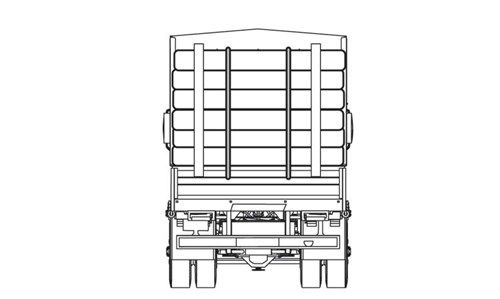
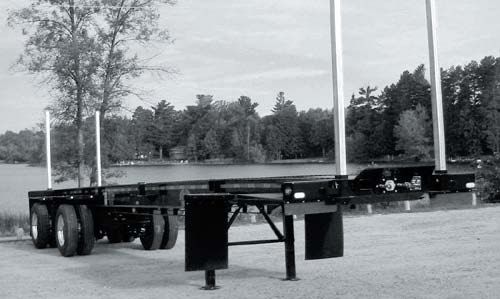
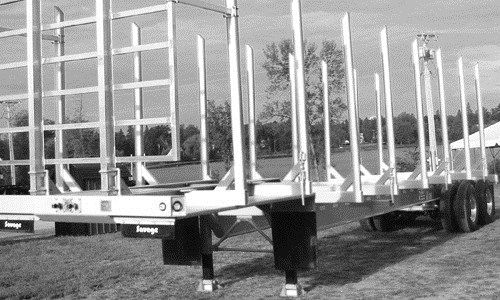
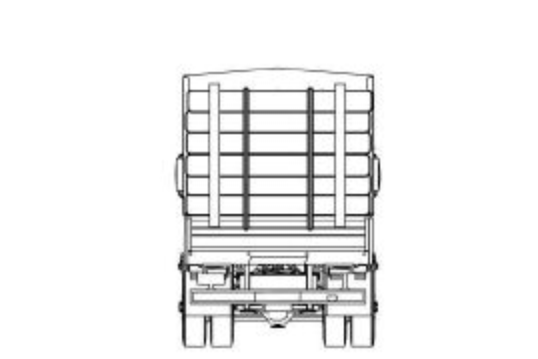
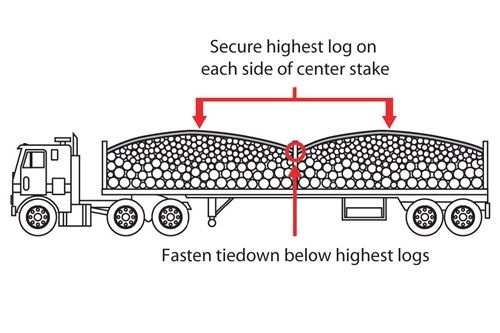
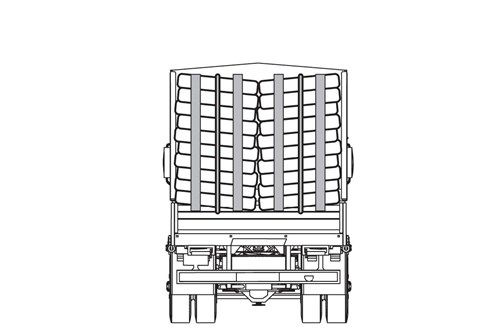
 Related Cargo Securement Terms That Every Driver Should Know:
Related Cargo Securement Terms That Every Driver Should Know: 



 TT On Facebook
TT On Facebook